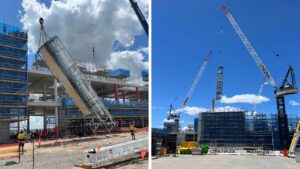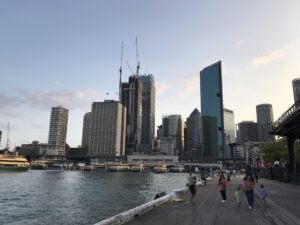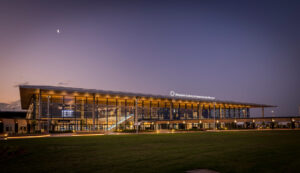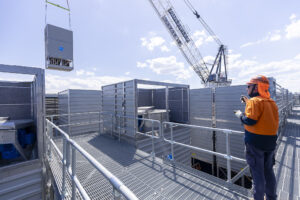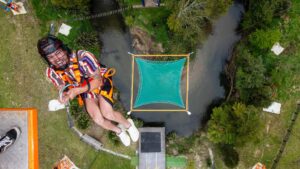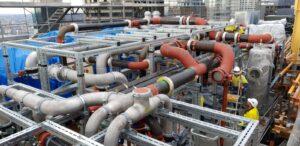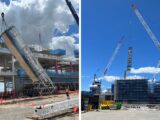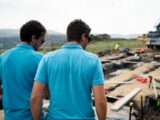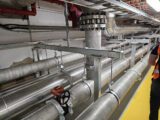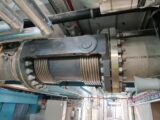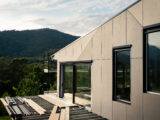Blogs
Welcome to our blog, a resource hub designed for contractors, builders, and architects looking for practical solutions to engineering challenges.
Here, you’ll find insights, expert advice, and real-world applications to help you navigate complex projects with confidence. From structural considerations to innovative design approaches, our articles are crafted to provide actionable information that supports your work.
We’re committed to sharing knowledge that helps you build efficiently, solve problems effectively, and achieve the best outcomes. If you have a question or need more details on a topic, feel free to reach out—we’re here to help.
Blogs
-
Prefab & Seismic Engineering: Early is Better
Real project gains from early structural planning of building services Every building project has its own unique constraints, challenges, and pressures, yet they all share the same core objectives: deliver a building that complies with the NCC and project goals, on time and within budget. Planning plays a critical role in project outcomes. The MacLeamy Curve highlights that the influence of decisions on cost, performance, and final results is greatest at the very beginning of a project, long before construction starts. This holds true for the engineering of non-structural elements (NSEs: mechanical, electrical, hydraulic & fire systems, ceilings, and partitions). While consultants focus... -
Creating Landmarks of Tomorrow
When we talk about iconic buildings, the conversation often begins with architecture. Form, scale, and visual identity draw attention. But lasting landmarks are remembered for more than their appearance. -
Anchoring to Hollowcore: Why Building Services Get Stuck Below the Slab
Hollowcore concrete slabs offer real benefits to builders and developers - speed, efficiency, and reduced weight. But when building services contractors arrive to install ductwork, cable trays or pipework, those same slabs can quickly become a problem. -
Quay Quarter Tower, Sydney
Engineering Movement, Precision and Performance into Australia’s Most Ambitious Vertical Expansion Quay Quarter Tower (QQT) represents a world-first in high-rise adaptive reuse. Located in Sydney’s Circular Quay, the project redefined what is possible in construction by retaining two-thirds of the original AMP Centre. The design, led by 3XN with executive architect BVN, demonstrates sustainable ingenuity and bold architectural thinking. Delivering this vision required precision engineering. KUSCH was engaged by Equilibrium & Climatech JV Pty Ltd (ECJV) to provide design and certification for the mechanical and hydraulic risers. The project's constraints included seismic compliance, inter-storey drift, and significant vertical spans, requiring integrated solutions... -
Future in Focus: Supporting the Next Generation of Motorsport
Backing Sammy Jansen van Vuuren to support community and emerging talent. At KUSCH, we believe the future is something you actively shape. It lives in the decisions you make, the people you support, and the values you bring to life through action. That belief sits at the heart of our recent partnership with rising karting talent Sammy Jansen van Vuuren, who was selected as part of the Team of Tomorrow initiative led by Karting Australia and the Australian Grand Prix Corporation. This opportunity isn’t just about motorsport. It’s about recognising potential, rewarding dedication, and creating space for the next generation to thrive. About... -
Case Study: Western Sydney International Airport
Seismic, prefabrication and vibration engineering solutions from KUSCH for Western Sydney International Airport. Western Sydney International Airport brings together some of the world’s most respected design and engineering teams to deliver a project with national significance. The project was developed by Zaha Hadid Architects in partnership with Cox Architecture and Woods Bagot, combining global design capability with deep local knowledge. From its modular layout to its consideration for long-term sustainability and performance, the project sets a new benchmark for major infrastructure in Australia. The airport is positioned to become a core economic and transport hub for Greater Western Sydney. Its delivery spans... -
Prefab Power: Engineering IL4 Cooling Towers for Critical Infrastructure
At NEXTDC S3 Sydney, KUSCH engineered the structural design of 54 prefabricated cooling towers—each nearly 9 metres tall and IL4-rated for seismic and wind loads. Delivered in modular components and lifted into place with Roborigger technology, the system accelerated installation by design. With 26 towers now operational, this project showcases how prefabrication and precise engineering keep critical infrastructure cool, efficient, and on schedule. -
Falling with Style – Engineering the Vertigo Free-Fall Ride
KUSCH brought engineering precision to pure adrenaline with Vertigo—the Southern Hemisphere’s first free-fall ride of its kind. Designed for Rotorua’s Velocity Valley Adventure Park, the 43-metre drop ride features a custom mechanical cable system and support frame, engineered to safely decelerate riders mid-fall. From FEA to fabrication drawings, we ensured strength, safety, and compliance—all while embracing the fun side of engineering. -
L29 Wynyard Place – A Prefab Plantroom Installed in a Weekend
The L29 chiller plantroom at Wynyard Place was prefabricated into 15 SUPA modules and craned into place over a single weekend—compressing the mechanical program by 12 weeks. Seismic requirements were fully integrated into the prefabricated frames via BIM, eliminating the need for on-site bracing and demonstrating how prefabrication can accelerate complex builds without compromising compliance.
